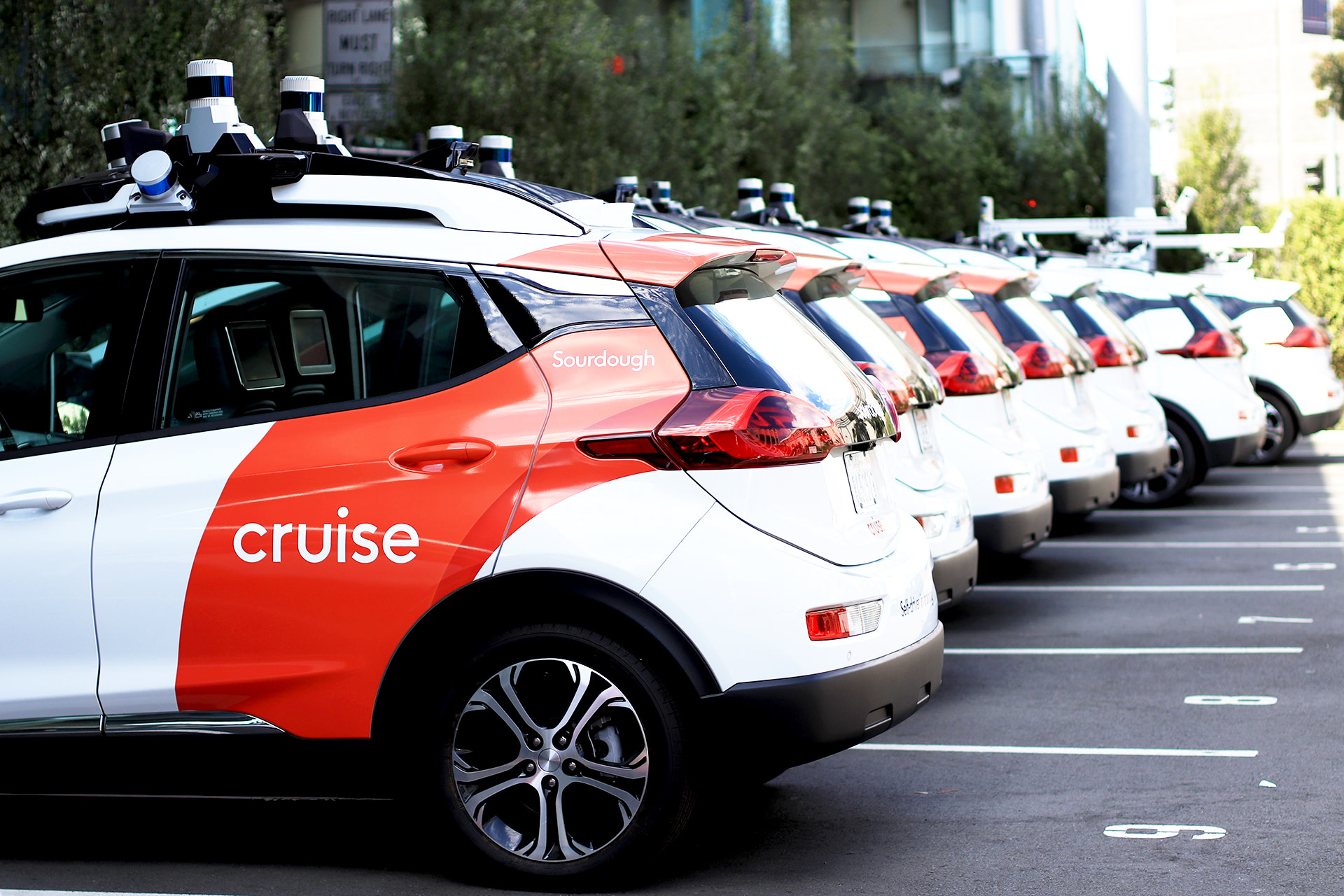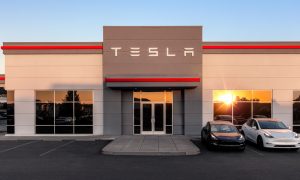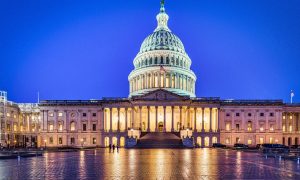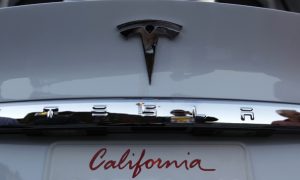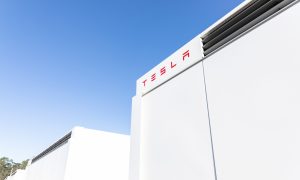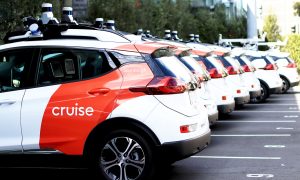A California judge has forced General Motors’ (GM) self-driving unit Cruise to increase its settlement offer to the maximum amount, after one of the company’s robotaxis pinned and seriously injured a pedestrian in October.
On October 2, a driverless Cruise vehicle dragged and pinned a pedestrian in San Francisco, and the company’s license to operate self-driving cars was immediately revoked by the California Department of Motor Vehicles (DMV). The DMV later said that Cruise “misrepresented” and “omitted” crucial details about its response to the accident, and the California Public Utilities Commission (CPUC) in December ordered the company to appear before a judge this month.
During the hearing, which was held on Tuesday, California Administrative Law Judge (ALJ) Robert Mason III suggested that Cruise revise its $75,000 settlement offer to the maximum penalty of $112,500, after calling the company’s proposed amount “low,” and even suggesting the company was seeking a “discount.”
While Judge Mason III said he appreciated Cruise attempting to take “corrective action” in its crash response procedures, he added that the company should “take a hint” following his multiple questions about the offer amount, suggesting directly that Cruise change its settlement offer to the full penalty.
“Point taken, your Honor,” responded Craig Glidden, Cruise President and Chief Administrative Officer. “We immediately revise our offer to the amount requested.”
Waymo could face new legal barriers in its expansion to Los Angeles
The hearing discussed findings from an investigation conducted by the law firm Quinn Emanuel, which Cruise hired, including that internet connectivity hampered the company’s sharing of video footage from the accident with regulators in meetings that followed.
In response to the motion for approval to settle at $75,000, the commission can adopt, adopt with revisions, or reject Cruise’s filing. Following the hearing, the next step is for Judge Mason to write a proposed decision on the case for the commissioner’s consideration, with the general timeframe falling within about 60 days, as a CPUC spokesperson clarified to Teslarati.
Cruise said it was eager to resolve the case and move past the incident, adding that it wanted to continue to “advance the mission of bringing driverless cars that are safer to the public and also greater accessibility to the public to the market.”
However, Mason didn’t make it sound like the commission was eager to set the case aside:
“While the commission does fall on the side of getting its cases resolved, I don’t know that this is one of those protracted pieces of litigation that we’re usually most anxious to put aside and then move forward with the regulatory process,” Mason added.
In the original motion, filed on January 30, Cruise outlines the key requirements it would have to follow as part of the settlement:
1. Cruise will adopt voluntarily several new data reporting enhancements that will provide additional data to the Commission concerning California collisions and AVs operating in California under a deployment permit that enter a minimal risk condition (“MRC”) state and result in conditions described in Attachment A;
2. Cruise will provide the Commission with Cruise’s responses to the permit reinstatement questions from the California Department of Motor Vehicles (“DMV”) at the same time Cruise provides those responses to the DMV;
3. Cruise will make a payment of $75,000 to the State General Fund within ten (10) days of the Commission’s approval of the Settlement Agreement without modification; and
4. Upon the Commission’s approval of the Settlement Agreement, the OSC proceeding will be closed.
“We are committed to working in partnership with the CPUC, other regulators and government agencies to improve transportation safety in support of a shared goal –– providing better, safer and more accessible transportation to the public in our communities,” a Cruise spokesperson wrote in an email to Teslarati. “Over the past several months, we have taken important steps to improve our leadership, processes and culture, and we are committed to resolving matters to the Commission’s satisfaction as we work to restore regulatory and public trust.”
Cruise also noted that the accident, which occurred after the pedestrian had already been hit by a human driver, was partially caused by the driverless ride-hailing vehicle falsely identifying the situation as a side-impact collision rather than a frontal collision, causing the Minimal Risk Condition (MRC) response that forces the vehicle to pull over.
In addition, Cruise said it is currently expecting a new Chief Safety Officer in the “not too distant future,” after two co-founders resigned immediately following the accident, and after the company fired nine executives and laid off nearly a quarter of its staff on the same day in December.
GM recently announced plans to cut spending on Cruise in half this year, though it said it also hoped to “refocus and relaunch” the company’s operations. GM CEO Mary Barra highlighted significant changes at Cruise, which the company began implementing following the Quinn Emanuel investigation.
“At Cruise, we are committed to earning back the trust of regulators and the public through our commitments and our actions,” Barra said following GM’s 2023 earnings call.
You can see the full January 30 filing from Cruise below, including the findings from the Quinn Emanuel investigation, which Cruise made public last month.
What are your thoughts? Let me know at zach@teslarati.com, find me on X at @zacharyvisconti, or send your tips to us at tips@teslarati.com.
News
Tesla begins Robotaxi certification push in Arizona: report
Tesla seems serious about expanding its Robotaxi service to several states in the coming months.

Tesla has initiated discussions with Arizona transportation regulators to certify its driverless Robotaxi service in the state, as per a recent report from Bloomberg News. The move follows Tesla’s launch of its Robotaxi pilot program in Austin, Texas, as well as CEO Elon Musk’s recent comments about the service’s expansion in the Bay Area.
The Arizona Department of Transportation confirmed to Bloomberg that Tesla has reached out to begin the certification process for autonomous ride-sharing operations in the state. While details remain limited, the outreach suggests that Tesla is serious about expanding its driverless Robotaxi service to several territories in the coming months.
The Arizona development comes as Tesla prepares to expand its service area in Austin this weekend, as per CEO Elon Musk in a post on X. Musk also stated that Tesla is targeting the San Francisco Bay Area as its next major market, with a potential launch “in a month or two,” pending regulatory approvals.
Tesla first launched its autonomous ride-hailing program on June 22 in Austin with a small fleet of Model Y vehicles, accompanied by a Tesla employee in the passenger seat to monitor safety. While still classified as a test, Musk has said the program will expand to about 1,000 vehicles in the coming months. Tesla will later upgrade its Robotaxi fleet with the Cyercab, a two-seater that is designed without a steering wheel.
Sightings of Cybercab castings around the Giga Texas complex suggests that Tesla may be ramping the initial trial production of the self-driving two-seater. Tesla, for its part, has noted in the past that volume production of the Cybercab is expected to start sometime next year.
In California, Tesla has already applied for a transportation charter-party carrier permit from the state’s Public Utilities Commission. The company is reportedly taking a phased approach to operating in California, with the Robotaxi service starting with pre-arranged rides for employees in vehicles with safety drivers.
News
Tesla sets November 6 date for 2025 Annual Shareholder Meeting
The automaker announced the date on Thursday in a Form 8-K.

Tesla has scheduled its 2025 annual shareholder meeting for November 6, addressing investor concerns that the company was nearing a legal deadline to hold the event.
The automaker announced the date on Thursday in a Form 8-K submitted to the United States Securities and Exchange Commission (SEC). The company also listed a new proposal submission deadline of July 31 for items to be included in the proxy statement.
Tesla’s announcement followed calls from a group of 27 shareholders, including the leaders of large public pension funds, which urged Tesla’s board to formally set the meeting date, as noted in a report from The Wall Street Journal.
The group noted that under Texas law, where Tesla is now incorporated, companies must hold annual meetings within 13 months of the last one if requested by shareholders. Tesla’s previous annual shareholder meeting was held on June 13, 2024, which placed the July 13 deadline in focus.
Tesla originally stated in its 2024 annual report that it would file its proxy statement by the end of April. However, an amended filing on April 30 indicated that the Board of Directors had not yet finalized a meeting date, at least at the time.
The April filing also confirmed that Tesla’s board had formed a special committee to evaluate certain matters related to CEO Elon Musk’s compensation plan. Musk’s CEO performance award remains at the center of a lengthy legal dispute in Delaware, Tesla’s former state of incorporation.
Due to the aftermath of Musk’s legal dispute about his compensation plan in Delaware, he has not been paid for his work at Tesla for several years. Musk, for his part, has noted that he is more concerned about his voting stake in Tesla than his actual salary.
At last year’s annual meeting, TSLA shareholders voted to reapprove Elon Musk’s compensation plan and ratified Tesla’s decision to relocate its legal domicile from Delaware to Texas.
Elon Musk
Grok coming to Tesla vehicles next week “at the latest:” Elon Musk
Grok’s rollout to Tesla vehicles is expected to begin next week at the latest.

Elon Musk announced on Thursday that Grok, the large language model developed by his startup xAI, will soon be available in Tesla vehicles. Grok’s rollout to Tesla vehicles is expected to begin next week at the latest, further deepening the ties between the two Elon Musk-led companies.
Tesla–xAI synergy
Musk confirmed the news on X shortly after livestreaming the release of Grok 4, xAI’s latest large language model. “Grok is coming to Tesla vehicles very soon. Next week at the latest,” Musk wrote in a post on social media platform X.
During the livestream, Musk and several members of the xAI team highlighted several upgrades to Grok 4’s voice capabilities and performance metrics, positioning the LLM as competitive with top-tier models from OpenAI and Google.
The in-vehicle integration of Grok marks a new chapter in Tesla’s AI development. While Tesla has long relied on in-house systems for autonomous driving and energy optimization, Grok’s integration would introduce conversational AI directly into its vehicles’ user experience. This integration could potentially improve customer interaction inside Tesla vehicles.
xAI and Tesla’s collaborative footprint
Grok’s upcoming rollout to Tesla vehicles adds to a growing business relationship between Tesla and xAI. Earlier this year, Tesla disclosed that it generated $198.3 million in revenue from commercial, consulting, and support agreements with xAI, as noted in a report from Bloomberg News. A large portion of that amount, however, came from the sale of Megapack energy storage systems to the artificial intelligence startup.
In July 2023, Musk polled X users about whether Tesla should invest $5 billion in xAI. While no formal investment has been made so far, 68% of poll participants voted yes, and Musk has since stated that the idea would be discussed with Tesla’s board.
-

 Elon Musk1 week ago
Elon Musk1 week agoTesla investors will be shocked by Jim Cramer’s latest assessment
-

 Elon Musk3 days ago
Elon Musk3 days agoElon Musk confirms Grok 4 launch on July 9 with livestream event
-

 Elon Musk15 hours ago
Elon Musk15 hours agoxAI launches Grok 4 with new $300/month SuperGrok Heavy subscription
-

 News7 days ago
News7 days agoTesla Model 3 ranks as the safest new car in Europe for 2025, per Euro NCAP tests
-

 Elon Musk2 weeks ago
Elon Musk2 weeks agoA Tesla just delivered itself to a customer autonomously, Elon Musk confirms
-

 Elon Musk1 week ago
Elon Musk1 week agoxAI’s Memphis data center receives air permit despite community criticism
-

 Elon Musk2 weeks ago
Elon Musk2 weeks agoTesla’s Omead Afshar, known as Elon Musk’s right-hand man, leaves company: reports
-

 News2 weeks ago
News2 weeks agoXiaomi CEO congratulates Tesla on first FSD delivery: “We have to continue learning!”

